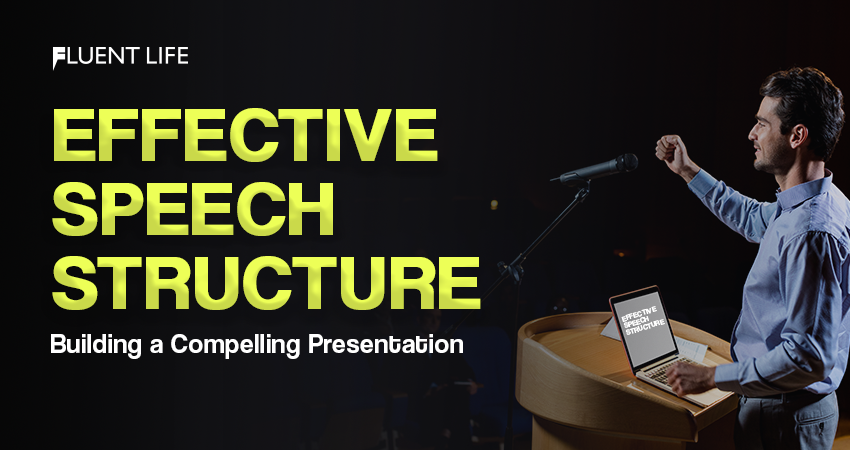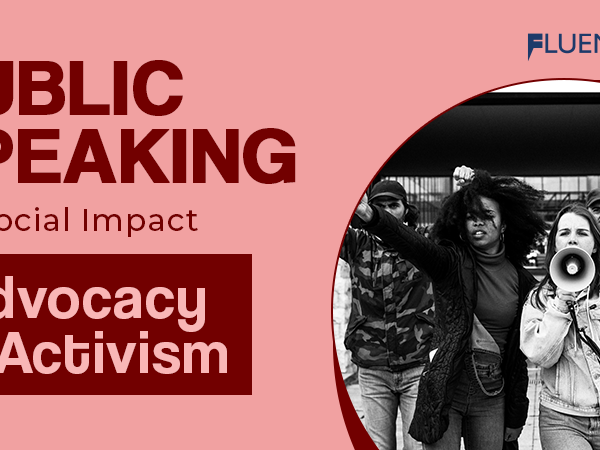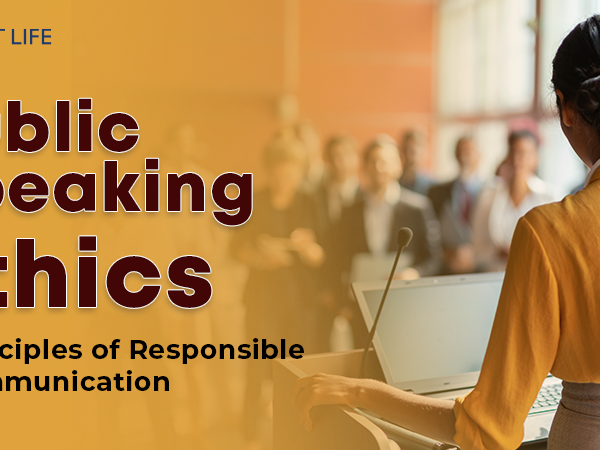It is crucial to understand the power of an excellent opening! It sets the scene for the rest of the presentation, catching the audience’s attention and making them curious. An inadequate introduction can easily cause a speech to fail, losing its listeners’ interest. Here, we will uncover the art of developing a effective speech structure from the start.
When starting your speech, it is essential to get your audience’s attention straight away. One way to do this is to start with an engaging anecdote or story linked to your topic. This will create a connection and stir their emotions, keeping them interested in your presentation.
It is also important to explain the purpose and main points of your speech in the introduction. This will ensure that the audience understands what you are trying to say and it will help guide them through the rest of your speech.
To make your introduction unique, think about including some unexpected or thought-provoking statistics or facts related to your topic. This will give your speech credibility and show that you have done substantial research on the subject. By displaying these interesting details early on, you will make your speech both informative and interesting.
I can give you an example of the power of a successful introduction. A few years ago, I attended a conference. The speaker began her presentation with a captivating story about her own challenges and successes in overcoming adversity. This opening instantly grabbed everyone’s attention and produced an emotional bond between the speaker and the audience. Throughout her speech, she incorporated relevant information and key points, while maintaining our interest with her fascinating storytelling style.
Importance of Effective Speech Structure
Creating an Engaging Speech: Structure it for Maximum Effect!
- Effective speech structure is vital to make your ideas shine. Without it, even the best ideas can get lost. A great structure acts as a guide, helping you engage your audience and leave a lasting impression.
- Good flow of ideas is key to keep your listeners hooked. Carefully structuring your speech provides them a roadmap that leads through a clear narrative. This helps them understand your message and stay engaged.
- Structuring your speech also helps clarify complex concepts and keeps your thoughts focused. Breaking arguments into smaller pieces allows your audience to take in information at their own pace. This enhances understanding and prevents any important points from being missed.
- A well-structured speech also builds suspense and anticipation. As you go through your presentation, strategically placing key points and evidence maintains interest. This adds dynamism to your delivery.
It’s time to take action! Use effective speech structure when crafting your next presentation. This will ensure each word uttered carries maximum impact and leaves an unforgettable mark on your audience. Don’t miss out on this opportunity; seize it today!
Understand Audience for Effective Speech Structure
Comprehend your audience’s needs! Tailor your speech to their interests, age range, gender, cultural backgrounds, and educational levels. Assess their knowledge of the topic, and incorporate stories, examples, or visuals that align with their passions. Additionally, recognize any emotional triggers. Take into account current events, trends, and local customs. Make a lasting impression and leave them feeling motivated!
Identifying the Key Message
The key message is the main point to convey through your presentation. It’s essential to determine this message at the beginning to steer your speech and stay focused.
Now, let’s look closer into how to identify the key message. There are 4 aspects to consider:
- Audience: Know their needs, interests, and what they already know.
- Purpose: Figure out the purpose of your presentation.
- Central Idea: Make one clear and short statement with all the content.
- Supporting Points: Identify the main points that back up the central idea.
By considering these aspects, you can craft a speech with a key message that your audience will appreciate.
Keep in mind, each aspect is essential for making an effective speech. Analyze your audience and tailor your message. Also, define a purpose that meets their needs and summarize all information into one central idea. Finally, create supporting points to strengthen and explain the main idea.
Pro Tip: When you’ve identified the key message, regularly check that it’s still relevant during the preparation process. That way, you’ll end up with a powerful presentation!
Organizing Effective Speech Structure
Organizing your speech is an essential part of delivering a captivating presentation. It helps you convey your message with clarity and makes an impact. Here are tips to help you structure your speech:
- Outline the main points you want to communicate.
- Include visuals such as graphs, charts, or slides to back up your points.
- Divide the speech into sections, each focusing on a specific aspect.
Also, add unique details to your content. Think about including personal anecdotes or examples that make your message more relatable.
Further, use transitions between sections for a smooth flow. Vary your tone of voice and delivery style. Practice timing and pacing to cover all points within the time limit.
By following these suggestions, you can create a well-structured speech. Organization is key in crafting a compelling presentation!
Crafting an Engaging Opening
Grab your audience’s attention from the start! Share a thought-provoking quote or surprising statistic. Or, tell a compelling story that illustrates the importance of your presentation. You can also use rhetorical questions to make people reflect on their knowledge or beliefs.
Barack Obama’s 2004 Democratic National Convention speech is an example. He started with, “There’s not a liberal America and a conservative America; there’s the United States of America.” Such a powerful opening resonated with the crowd and set the stage for a meaningful message.
Also Read: Find Your Passion: A Path to Self-Discovery and Fulfillment
Creating a Coherent Body
To get your message across effectively, you need a coherent body. Here’s how to create one:
- Grab audience attention with an introduction.
- Break content into logical sub-points and bullet lists.
- Use clear transitions between sections.
- Include relevant examples and anecdotes.
You’ll be glad to know that Harvard Business Review found that presentations which use storytelling elements are 40 times more likely to persuade people.
Incorporating Visual Aids
Today, visuals are a must for successful presentations. They not only keep the audience engaged, but also help communicate info more clearly. Here are some tips on using visuals.
- Tables are great for data. They make it easy for the audience to understand complex info. Plus, they look good. Columns can be used to sort and compare data.
- Visuals like graphs, charts, and images can also be used to explain key points. Graphs show trends or patterns in data. Images evoke emotions and create a lasting impression.
However, visuals should be used strategically. Pick only those which directly support your speech. Also, use appropriate colors, fonts, and formatting styles.
Captivating the Audience with Delivery
To captivate the audience with delivery, it’s essential to have a good flow and strong presence. Your body language, voice, and facial expressions all play a part. Appropriate gestures and eye contact can establish a connection. Visual aids and multimedia elements like videos and images can add depth and variety.
Verbal delivery is also important. Speak clearly and confidently, varying tone and pace. Storytelling techniques like anecdotes and personal stories can create an emotional connection. Captivating an audience involves both artistry and science. Master these elements for memorable presentations that truly captivate and inspire.
Also Read: Impact of Physical Fitness: Boost Self-Improvement
Concluding for Impact
For a powerful conclusion, plan ahead! Make it count with a memorable quote or story that relates to your main message. Summarize the key points in a concise way. Invite audience participation by asking thought-provoking questions.
Connect your topic to real-life situations or societal issues. This will inspire your listeners. Avoid introducing new information. Stick to the main ideas and maintain consistency.
Practice delivering your conclusion with confidence and enthusiasm. This will maximize its impact and leave a lasting impression on your audience.
Practice and Rehearsal Techniques
To deliver an outstanding presentation, consistent practice and rehearsal is a must. Here are some points to help refine your skills and communicate effectively with your audience:
- Consistency is key. Doing regular practice helps you internalize your content and builds confidence. This will make you feel in control during your presentation.
- Visualization can be powerful. Imagine yourself delivering an effective presentation. This will help you anticipate any potential problems and make necessary changes.
- Get feedback. Practicing in front of a supportive audience or seeking advice from experienced people can give you valuable insights. Criticism can point out areas you can improve on.
Apart from that, don’t forget these points:
- Don’t over-rehearse. Too much practice can make you sound robotic. Find the balance between being prepared and still being spontaneous.
- Create a mock environment. This will help you get used to potential distractions such as noise or equipment problems. You will be more confident on the actual day.
- Focus on non-verbal communication. Don’t forget to practice body language, facial expressions, and gestures. They will add depth to your message.
By following these techniques, you can give amazing presentations by being confident, well-prepared, and flexible.
Final Tips – Effective Speech Structure
When it comes to delivering a compelling presentation, having an effective speech structure is essential. Here are some final tips to help you craft the perfect one!
- Nail the Opening: Make sure to begin with an attention-grabbing statement or question. This will draw in your audience and make them excited to hear what you have to say.
- Organize Your Content: Separate your speech into logical sections with clear headings. This will make it easier for your listeners to understand and follow your message.
- Use Visuals Wisely: Visual aids like slides and props can make your presentation even better. But, be careful not to use too many! Only include visuals that add value.
To make your speech even more compelling, add unique details. Think of personal stories or statistics that support your main points. This will make your presentation stand out in the minds of your audience.
And here’s a pro tip: Rehearse! Practice your speech multiple times. This will help you become more confident and identify any areas that need improvement.
Follow these guidelines and deliver your message with passion! With these tips, you’ll create an impactful and engaging presentation that your audience won’t soon forget.
Also Read: Top 100 Commonly Used A to Z Phrasal Verbs for English Fluency
Conclusion
A captivating conclusion awaits! Skillful structure of your speech can leave a lasting impact. Weave compelling content to ensure your message is clear & resonates.
- A strong opening is vital to grab listeners’ attention. This sets the tone, captivating interest & keeping them engaged. Logical & coherent structure allows for seamless transitions.
- Incorporate key points to bolster argument & provide evidence. Each point should flow naturally, building a cohesive narrative. Utilize rhetorical devices for emotion & energy.
- Concise language avoids jargon & complicated terminology for better comprehension.
Martin Luther King Jr. is an example of effective speech structure. In his “I Have a Dream” speech, he outlined injustices & painted a vivid picture of equality. He used emotional language & repetition, inspiring millions & launching the civil rights movement.
When crafting a persuasive presentation or speech, consider an effective structure that captivates from start to finish. Organize thoughts into a logical flow & incorporate creative elements. Leave a lasting impression & ensure your message resonates. Know More – The Fluent Life
Frequently Asked Questions
Q1: What is the importance of effective speech structure?
A: Effective speech structure is crucial because it helps organize ideas, maintain the audience’s interest, and ensure a clear and concise message delivery. It provides a framework that guides the flow of information, making the presentation more compelling.
Q2: How can I build a compelling presentation?
A: To build a compelling presentation, start by defining your objective and target audience. Then, organize your content into logical sections, ensuring a clear introduction, body, and conclusion. Include engaging visuals, use storytelling techniques, and practice your delivery to create a captivating presentation.
Q3: What are some tips for structuring the introduction of a speech?
A: When structuring the introduction of a speech, it’s important to grab the audience’s attention with a compelling opening line or anecdote. Clearly state the purpose of the presentation and preview the main points you will cover. Hooking the audience and setting the tone early on is crucial.
Q4: How should I structure the body of my presentation?
A: The body of your presentation should be divided into sections or key points. Each section should have a clear and concise message, supported by relevant facts, examples, or visuals. Transition smoothly between sections to maintain the flow and ensure the audience can easily follow along.
Q5: What is the recommended structure for the conclusion of a speech?
A: The conclusion of a speech should summarize the main points and reiterate the key message. It is an opportunity to leave a lasting impression on the audience. Avoid introducing new information in the conclusion and end with a call to action or a thought-provoking statement.
Q6: How can I improve the overall structure of my speech?
A: To improve the overall structure of your speech, start by outlining the main points you want to cover. Ensure a logical sequence and prioritize the most important information. Use signposts or transitional phrases to guide the audience throughout the presentation. Rehearse and seek feedback to refine the structure further.






